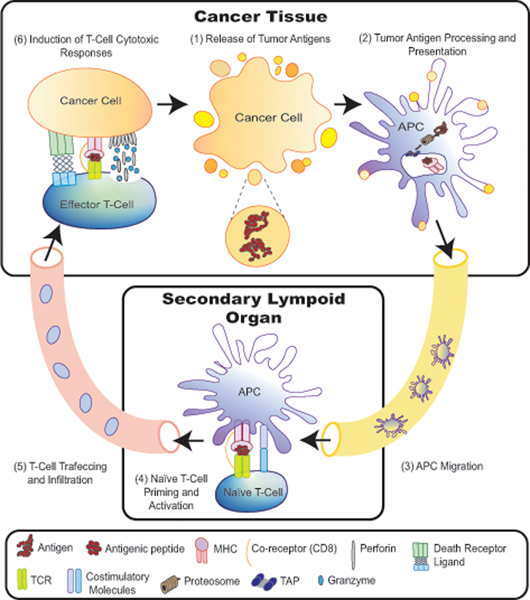FIGURE 1.

Cancer–immunity cycle. During cancer development, cancer cells die. Antigen presenting cells (APCs) within the tumors engulf dead cancer cells and/or their corresponding particles. APCs process engulfed materials into smaller peptides to be presented on their surface carried on major histocompatibility complex (MHC) molecules. Those APCs migrate through the lymphatics to secondary lymphoid organs and activate antigen-specific- naive T cells. Then, active T cells travel through blood vessels to infiltrate into the tumor. Intratumoral effector T cells can recognize tumor antigens on the surface of cancer cells and kill them, resulting in the release of more antigens. Cytotoxic T cells kill their cellular targets via either the death receptor pathway or the granule exocytosis pathway. Endoplasmic reticulum (ER); T-cell receptor (TCR); transporter associated with antigen processing (TAP).
